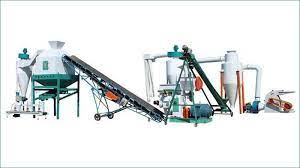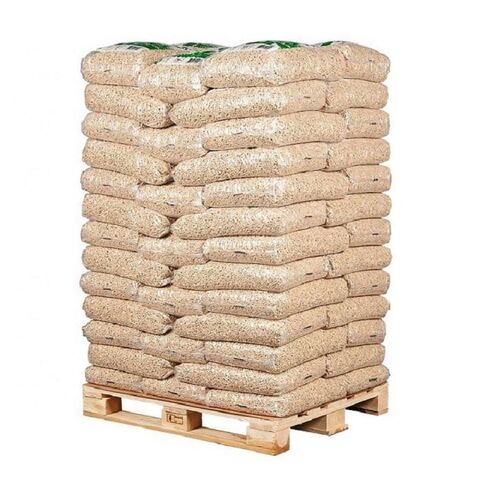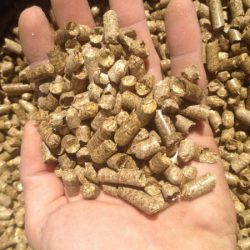Description
ENplus A1 Wood Pellets: Details and Production Process
ENplus A1 wood pellets refer to a specific quality standard for wood pellets used as a source of fuel. These standards are typically used in Europe to ensure the quality and performance of wood pellets for heating purposes. Buy cheap A1 wood pellets for your heating https://en.wikipedia.org/wiki/Pellet_fuel
A1 wood pellets are made primarily from clean, untreated wood, often sourced from sawmill residues, wood shavings, or wood chips. They do not contain any additives, binders, or contaminants. Pine wood is the most common source of wood used to produce A1 wood pellets. https://energyholzgmbh.com/product/tre-pellets/
Advantages of Using ENplus A1 Wood Pellets
A1 wood pellets are a type of biomass fuel made from compressed sawdust and wood shavings. They are commonly used as a renewable energy source for heating and electricity generation. Here are some benefits of using A1 wood pellets:
- Low Moisture Content: A1 wood pellets have a low moisture content, usually below 10%. Low moisture content is important because it ensures efficient combustion and reduces the potential for corrosion and creosote buildup in pellet stoves and boilers.
- High Energy Density: These pellets have a high energy density, which means they can provide a significant amount of heat for their size. This makes them an efficient and cost-effective choice for heating applications. https://energyholzgmbh.com/product/trapellets/
- Consistent Size and Shape: A1 wood pellets are manufactured to have a consistent size and shape, typically around 6-8 millimeters in diameter and 10-30 millimeters in length. This uniformity ensures that they can be fed into pellet stoves and boilers without clogging or jamming.
- Low Ash Content: A1 pellets produce minimal ash when burned, typically less than 0.7% by weight. Low ash content reduces the need for frequent cleaning of pellet stoves and boilers.
- High Calorific Value: These pellets have a high calorific value, meaning they release a significant amount of heat when burned. This is important for efficient and effective heating. https://energyholzgmbh.com/product/pelotas-de-madeira/
A1 Wood Pellets Price
With many companies and shops supplying A1 wood pellets, all of their own prices based on their location and production, as a buyer you have to look for best quality and cheap price, A1 wood pellets cost €150 to €400 depending on your supplier.
Buy cheap wood pellets from Biomass Europa
Wood Pellets Packaging Standards
At biomass Europa we package and supply our wood pellets depending on clients requirements, it is done so for easy handling at clients storage location. We package in big bags of 1000kg, small bags of 15kg and in free loading tanks. The most commonly purchased packaging is 15kg bags packed on pallets loaded in trucks. https://energyholzgmbh.com/product/pellets-tal-injam/
Production Process of ENplus A1 Wood Pellets
A1 wood pellets, also known as premium wood pellets, are a high-quality type of wood pellet typically used for heating purposes, especially in pellet stoves and pellet boilers. The production process of A1 wood pellets involves several key steps:

- Wood Selection: The first step in producing A1 wood pellets is selecting the right type of wood. High-quality wood pellets are typically made from clean, dry, and untreated hardwood or softwood. The choice of wood species can affect the characteristics of the final pellet, including its heat output and ash content.
- Wood Preparation: Once the wood is selected, it is processed into small wood chips or sawdust. The wood must be properly dried to reduce its moisture content. The moisture content of the wood is a critical factor in pellet production, as excess moisture can lead to poor pellet quality.
- Size Reduction: The dried wood chips or sawdust are then further reduced in size using a hammer mill or similar equipment. This process creates a consistent particle size, which is important for the quality and performance of the pellets. https://energyholzgmbh.com/product/pellets-de-madera/
- Pelletizing: The next step is pelletizing, where the wood particles are compressed and forced through a pellet die. The die has small holes through which the wood material passes, and pressure and heat are applied to form the pellets. Typically, no additives or binders are used in A1 wood pellet production, as they are made solely from compressed wood fibers.
- Cooling: After the pellets are formed, they are usually hot and need to be cooled down to room temperature. This is done using a cooling system, often involving fans and airflow.
- Screening: Once the pellets are cooled, they are passed through a series of screens to remove any fines or dust. A1 wood pellets have specific size requirements, and screening helps ensure they meet these standards. https://energyholzgmbh.com/product/pellet-di-legno/
- Packaging: The final step in the production process is packaging the pellets. A1 wood pellets are typically packaged in bags, typically 15 kg (33 lb) or 20 kg (44 lb) bags. The bags are sealed to prevent moisture from entering and to maintain pellet quality during storage and transportation.
It’s important to note that A1 wood pellets are manufactured to meet specific quality standards, which can vary by region or certification organization. These standards typically include criteria for pellet size, moisture content, ash content, and energy density. High-quality ENplus A1 wood pellets should have low moisture and ash content and a consistent size to ensure efficient and clean burning. https://energyholzgmbh.com/product-category/wood-pellets/
Production Capacity and Storage
The production capacity and storage of wood pellets depend on various factors, including the size of the pellet production facility, the availability of raw materials, market demand, and the storage infrastructure. Here’s an overview of these aspects:
Production Capacity:
A1 Wood pellet production facilities come in various sizes, ranging from small-scale operations to large industrial plants. The production capacity is usually measured in tons of pellets produced per hour or per day. Small-scale facilities may have a capacity of a few hundred kilograms per hour, while large industrial facilities can produce several tons per hour. We can supply up to 20000 tons monthly depending on the market demand and raw material availability.
The production capacity is often determined by the availability of raw materials, such as wood chips or sawdust. If there is a steady and abundant supply of raw materials, a production facility can operate at its maximum capacity.
The type of pelletizing equipment used also affects production capacity. Modern, efficient pellet mills can produce more pellets per unit of time compared to older or less advanced equipment. https://energyholzgmbh.com/product/houten-pellets/
The production capacity can also depend on how many hours per day the facility operates. Some facilities may run 24/7, while others operate on a more limited schedule.
Storage:
Storage of wood pellets is essential for ensuring a stable supply and maintaining pellet quality. Here are considerations for wood pellet storage:
Wood pellets should be stored in dedicated storage facilities. These can include silos, bins, or warehouses. The choice of storage facility depends on the scale of production and the expected storage duration.
The storage capacity depends on several factors, including the production rate, market demand, and the availability of storage space. Pellet storage facilities can range in size from small bins to large silos capable of holding thousands of tons of pellets.
Proper moisture control is critical for pellet storage. Wood pellets should be stored in a dry environment to prevent moisture absorption, which can cause degradation and clumping.
Adequate ventilation is essential to prevent temperature buildup and condensation within the storage facility. Proper airflow helps maintain pellet quality.
Consideration should be given to the loading and unloading mechanisms for wood pellets. Conveyor systems, augers, or vacuum systems are often used to transport pellets to and from storage facilities. https://energyholzgmbh.com/product/holzpellets/
Safety measures, such as fire prevention and detection systems, should be in place in pellet storage facilities to minimize the risk of fires.
Efficient inventory management systems are crucial to track pellet quantities, quality, and rotation to ensure that older pellets are used first (first in, first out, or FIFO). https://energyholzgmbh.com/product/%cf%80%ce%ad%ce%bb%ce%bb%ce%b5%cf%84-%ce%be%cf%8d%ce%bb%ce%bf%cf%85/
The size of the storage facility and the duration of storage depend on the specific needs of the pellet producer and the demands of the market. ENplua A1 wood Pellets storage facilities are designed to accommodate the production volume and the logistical requirements of the business. Properly managed storage is vital to maintain the quality and performance of wood pellets, ensuring they meet market standards and customer expectations.





Reviews
There are no reviews yet.